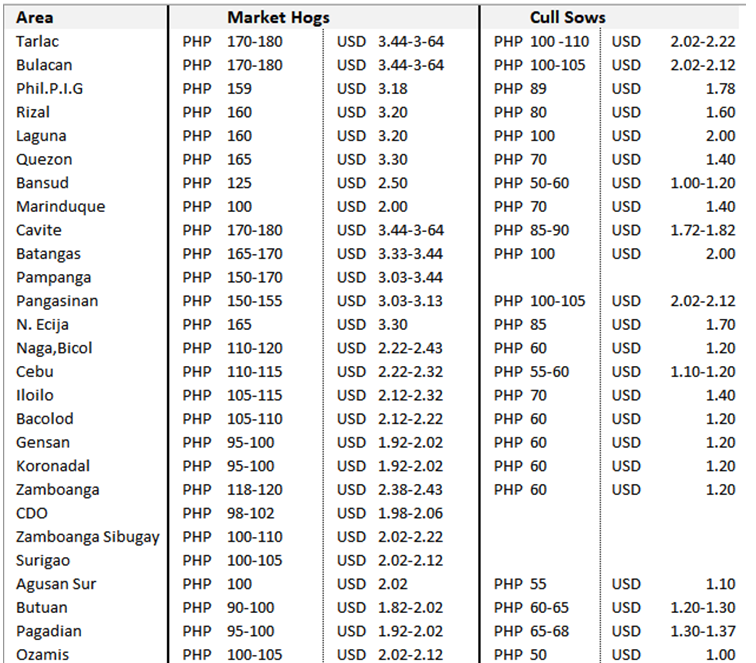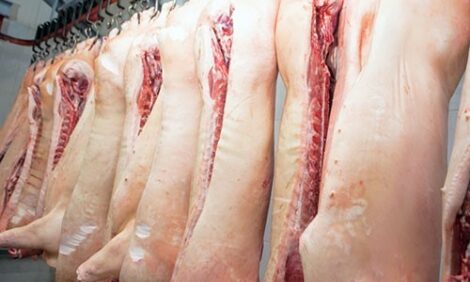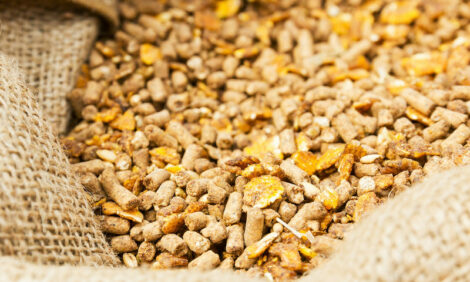



Genesus Global Market Report: South-East Asia, July 2020

Thailand
Vietnam has approved imports from Thailand of live pigs consisting of parent stock gilts and commercial hogs. The move is aimed at restocking sow herds and fulfilling Vietnam’s demand for pork.
The approval for the F1 gilts was made in June and for commercial pigs in July. Since June, nearly 10,000 gilts from Thailand were shipped to Vietnam and about 6000 commercials are being exported daily.
A total of 44 exporters and 1751 farms in Thailand have been certified by the country’s Department of Livestock Development (DLD) to ship the pigs to Vietnam. However, Vietnam’s Department of Animal Health has approved only 13 Thai exporters as eligible for shipping pigs to Vietnam.
Livestock authorities both countries have agreed that all pigs originating from Thailand must come from GAP (Good Agricultural Practice) certified farms. Additionally, 5% of the shipment must be tested negative to Brucellosis, Leptospirosis, and African Swine Fever. Urea test must be negative for beta-agonist, which is an illegal growth promoter.
Vietnam’s DAH (Department of Animal Health) also requires that all incoming pigs from Thailand to be vaccinated against FMD and PRRS prior to arrival in the country.
Live pig trade between the two countries is boosting the prices of gilts and live pigs in Thailand. Since June, commercial pig prices in Thailand increased by 20% to THB 78/kg ($2.60/kg). Price is still moving forward, and this has prompted the DLD to impose the maximum number of exports at 6000 pigs/day. The number covers commercial pigs, piglets, and processed pork.
Vietnam
The Covid-19 pandemic has affected 213 countries and territories around the world and claimed over 346,000 lives so far. However, Vietnam, a country of 94 million people that shares a land border with China, where the first novel coronavirus cases were reported last year, has reported only 325 infections and no deaths.
Vietnam has also stayed first on the economic outcomes front, ahead of Bangladesh, China, India and Indonesia. The International Monetary Fund has forecast Vietnam’s GDP to grow at 2.7 percent this year, higher than that of its regional peers, and it is expected to rebound strongly to 7 percent in 2021.
The price of the live pig is now 90,000 – 93,000vnd/kg in the North; 80,000 – 90,000 vnd/kg in the centre and 83,000 – 88,000 vnd/kg in the South. The average price will be around 86,000vnd/kg. For more details on price for every province, please see below
Pig price in Vietnam by region
There have been outbreaks of ASF in some areas, namely Cao Bang, Lai Chau, and Dien Bien province. These outbreaks are slowing the national re-stocking of pig herd. The continued shortage of pigs means the pig price remands high, even thou the Government supports imports for both breeding stock and commercial pigs. (source: vietnambiz.vn)
According to the Department of Livestock Production, sow herd inventory in Vietnam at the end of April was 2,86 million sows, including 109 thousand GGP/GP sows (source: cucchannuoi.gov.vn)
Philippines
Weekly Prices received by Pork Producers as of July 1, 2020 (NET Price)

We can observe a vast price differential received for market hogs in Philippines, with some regions of Luzon, which has been severely hit by ASF, receiving nearly twice the price compared to the areas still ASF free.
The Philippines had its first African swine fever outbreak in July 2019. The first cases were confirmed in Luzon, including several cities in Metro Manila and nearby provinces. One of the major routes of infection has been reported to be the illegal movement of animals and swill feeding (the feeding of catering waste).
Tens of thousands of hogs have since been culled nationwide in the government's bid to contain the spread. Local authorities have applied several measures to control the disease, including animal movement restrictions; screening; isolation; destruction of animal products; disposal of carcasses, enforced bio-security, etc.
Commercial pig farmers may now begin to restock their farms' post ASF using the BAI ASF sentinel program.
- Two-tree month old sentinel pigs are to be sourced from an ASF negative farm (based on the BAI guidelines).
- The number of sentinel pigs should be 5-10% of the total farm capacity and have access to all areas of the barn.
- After a minimum of two months with continuous observation and consecutive negative testing for ASF by PCR and ELISA the farm may proceed to restock.
According to Rabobank, global pork supply is expected to decline by 10% in 2020 as a consequence of ASF and SARS-CoV-2. The key to a successful future with a high pig performance and low cost of production is to have strict bio-security and restock from a reputable genetic company with high health status. Using gilts of unknown genetic merit and/or slaughter generation may save upfront cost but you have to live with the negative long term of poor performance and higher cost of production.










